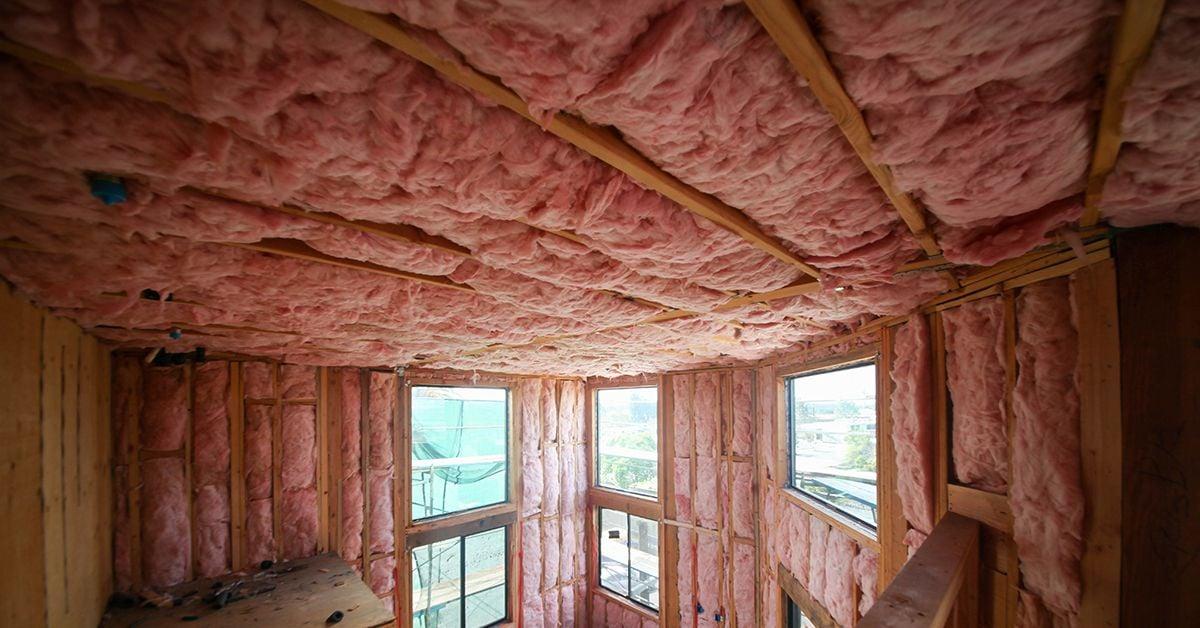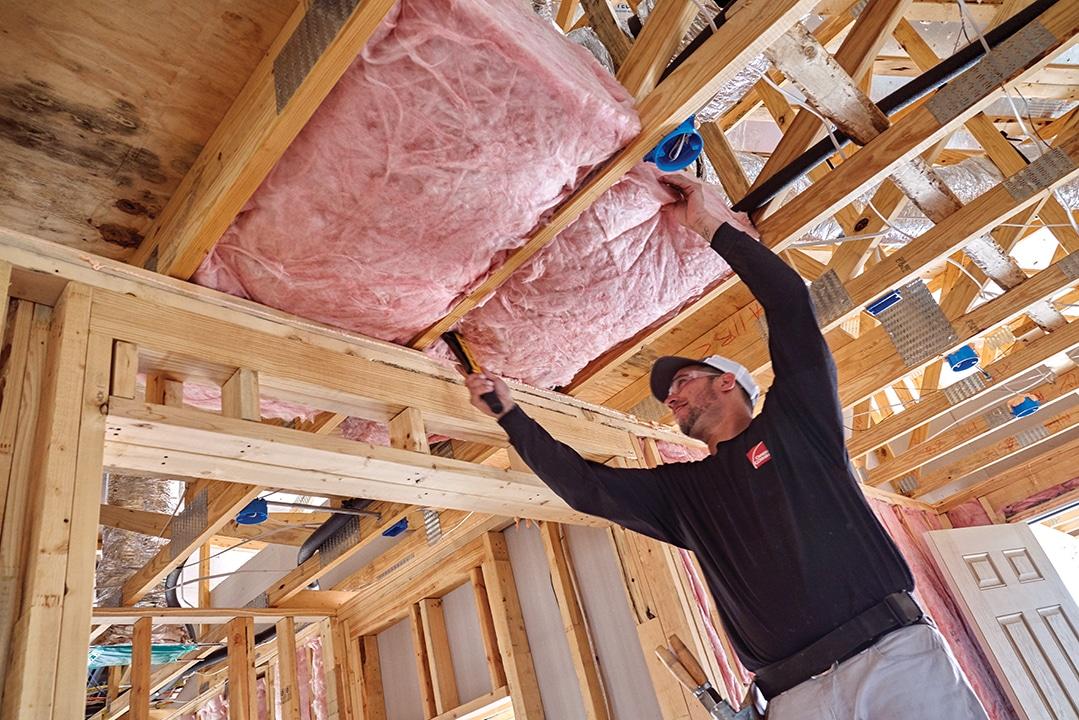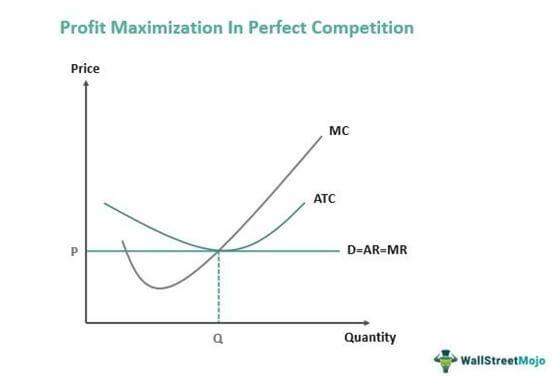Imagine walking into a commercial space—perhaps a bustling office or a chic boutique—only to be greeted by a refreshing wave of perfectly conditioned air. The temperature is just right, not too hot, not too cold, creating an inviting atmosphere for both employees and customers. A well-balanced climate can be a game-changer, transforming any business environment into a haven of productivity and comfort. At the heart of this balance lies an unsung hero: the meticulous insulation of windows and doors. When paired with the efficient cooling prowess of a mini split AC system, proper insulation becomes not just a preventative measure, but a masterstroke of energy efficiency and cost-effectiveness. In this article, we delve into the best practices that ensure your commercial spaces remain thermally insulated, laying the groundwork for an environment that’s as welcoming as it is energy-savvy. Whether you are a business owner, facilities manager, or just someone passionate about optimal climate control, this guide will equip you with the knowledge to achieve that delicate, yet crucial, equilibrium.
Understanding the Importance of Insulation for Energy Efficiency
Investing in quality insulation for windows and doors is pivotal for enhancing the energy efficiency of commercial spaces utilizing Mini Split AC systems. Not only does proper insulation maintain a consistent indoor temperature, but it also reduces the overall energy consumption and operational costs. High-performance insulation materials such as **spray foam, weatherstripping, and insulated glass units (IGUs)** are excellent choices for commercial settings. These materials act as barriers to air and moisture infiltration, thereby minimizing the amount of energy needed to maintain a comfortable environment.
Moreover, there are several best practices to consider when insulating windows and doors in commercial buildings. For example:
- Seal Gaps and Cracks: Use caulk or expandable foam to fill any gaps around window and door frames.
- Install Door Sweeps: These can prevent drafts under exterior doors, especially in high-traffic areas.
- Insulated Curtains or Blinds: Adding these can provide an additional layer of thermal insulation.
Incorporating these materials and techniques ensures that the commercial space remains efficient year-round, offering a comfortable atmosphere for both employees and clients.
| Method | Description |
|---|---|
| Weatherstripping | Flexible material applied to seal gaps around windows and doors. |
| Spray Foam Insulation | Polyurethane foam that expands and hardens to seal gaps. |
| Insulated Glass Units (IGUs) | Double or triple-pane windows with gas insulation between panes. |

Choosing the Right Insulation Materials for Commercial Spaces
When considering insulation materials for windows and doors in commercial spaces equipped with a Mini Split AC system, it’s crucial to focus on **materials that offer both thermal resistance and durability**. Traditional options like fiberglass and cellulose provide excellent thermal insulation but might not always be the most sustainable or space-efficient choices. For modern commercial buildings, investing in spray foam insulation and rigid foam boards can bring significant advantages. Spray foam, for instance, not only seals gaps effectively but also enhances structural support and reduces airborne pollutants. Rigid foam boards, available in various thickness levels, help control temperature fluctuations, making them an optimal choice for energy-intensive commercial environments.
Another vital consideration is the implementation of **energy-efficient windows and doors** paired with **quality weatherstripping**. Energy-efficient windows, particularly those with double or triple glazing, offer better thermal performance while reducing the risk of condensation. Coupled with robust weatherstripping like silicone or EPDM rubber, they create an airtight seal that prevents both air leakage and water infiltration. For doors, insulated steel or fiberglass models are highly recommended due to their durability and superior insulation properties. Here’s a breakdown of suitable materials for different components:
| Component | Insulation Material |
|---|---|
| Windows | Double/Triple Glazing |
| Doors | Insulated Steel/Fiberglass |
| Weatherstripping | Silicone/EPDM Rubber |

Techniques to Effectively Seal Windows and Doors
To properly seal windows and doors in commercial spaces equipped with mini split AC systems, it’s essential to choose appropriate sealing techniques and materials. **Weatherstripping** is an effective method to prevent air leaks, using materials such as **vinyl, rubber, or foam**. Apply weatherstripping around the perimeter of doors and windows to create an airtight seal. Additionally, **caulking** is vital for joint sealing. Use high-quality, elastomeric caulk to fill in any gaps or cracks around window and door frames. These materials are flexible and withstand environmental changes, ensuring long-lasting insulation.
- Vinyl Weatherstripping: Durable and often used for high-traffic areas.
- Rubber Weatherstripping: Ideal for windows due to its flexibility and resilience.
- Foam Weatherstripping: Cost-effective and easy to install, perfect for doors needing quick fixes.
Another critical approach is installing **draft stoppers** or **door sweeps**. Mounted at the bottom of doors, these barriers prevent air infiltration under the door. Furthermore, ensure the windows are **double-glazed** or utilize energy-efficient glass to enhance insulation. Regular maintenance checks are equally important. Inspect seals, replace worn-out materials, and re-caulk areas prone to expansion and contraction. Additionally, using heavy **curtains or thermal shades** can aid in maintaining the desired indoor temperature by providing an extra layer of insulation.
| Material | Usage | Benefit |
|---|---|---|
| Vinyl | Weatherstripping | Durable for high-traffic areas |
| Elastomeric Caulk | Joint Sealing | Flexible and long-lasting |
| Double-Glazed Glass | Windows | Enhanced insulation |

Maximizing the Efficiency of Your Mini Split AC System
Boosting the performance of your mini split AC begins with ensuring that windows and doors are adequately insulated. **Effective insulation** not only helps maintain the desired indoor temperature but also reduces the workload on your HVAC system, resulting in significant energy savings. Begin by addressing common culprits of air leaks, such as **cracks, gaps, and poor sealing** around windows and doors. An easy way to identify these leaks is through a simple smoke test or using an infrared thermometer. Once detected, use weather stripping, caulking, or foam sealants to plug any detected air passages. For commercial spaces, consider installing **energy-efficient double-glazed windows** and **self-closing door mechanisms** to further enhance insulation.
Another impactful technique is to employ **window insulation film** and heavy **thermal curtains**. Window films, available in various tints and UV protection levels, can drastically reduce heat gain during summer and heat loss in winter. Pairing these with thick, insulated curtains adds another layer of barrier against temperature fluctuation. Additionally, keeping windows and doors closed when the AC is running sounds simple but is often overlooked in busy commercial environments. To help you get started, here’s a quick-reference table of common insulation methods and their benefits:
| Insulation Method | Benefits |
|---|---|
| Weather Stripping | Seals gaps and cracks, easy to install |
| Window Insulation Film | Reduces heat gain/loss, UV protection |
| Thermal Curtains | Additional barrier, aesthetic appeal |
| Double-Glazed Windows | Enhanced energy efficiency, noise reduction |
| Self-Closing Doors | Minimizes air leakage, maintains temperature |
Q&A
Q&A: Best Practices for Properly Insulating Windows and Doors in Commercial Spaces with Mini Split AC
Q: Why is it important to insulate windows and doors in commercial spaces?
A: Insulating windows and doors in commercial spaces is crucial for maintaining energy efficiency. Properly insulated spaces can significantly reduce energy consumption, leading to lower utility bills. Additionally, it ensures a consistent and comfortable indoor climate, which is essential for both employee productivity and customer satisfaction.
Q: How does proper insulation affect the performance of a mini split AC system?
A: Proper insulation enhances the performance of a mini split AC system by preventing the loss of cooled air and minimizing the infiltration of warm air from outside. This allows the AC unit to maintain the desired temperature more efficiently and reduces the workload on the system, leading to less wear and tear and potentially extending the unit’s lifespan.
Q: What are some key materials recommended for insulating commercial windows?
A: Some key materials for insulating commercial windows include double or triple-pane glass, low-emissivity (Low-E) coatings, and insulating window film. Double or triple-pane glass provides multiple layers of insulation, while Low-E coatings reflect heat and UV rays. Insulating window film offers an added layer of thermal resistance that can be easily applied to existing windows.
Q: What steps can be taken to properly seal and insulate commercial doors?
A: To properly seal and insulate commercial doors, one should ensure that weatherstripping is applied around the door frames to seal gaps. Installing a door sweep can prevent air from leaking under the door. For added insulation, consider using a door with a core made of insulating materials like foam or fiberglass.
Q: How do window treatments contribute to insulation?
A: Window treatments such as heavy curtains, thermal blinds, or cellular shades can significantly contribute to insulation by blocking drafts and reducing heat transfer through windows. These treatments add an extra barrier that enhances the overall thermal efficiency of the window, complementing the primary insulation efforts.
Q: Are there any specific insulation practices for sliding glass doors?
A: Yes, sliding glass doors can be particularly challenging to insulate but can benefit greatly from the right practices. Installing high-performance glazing, applying weatherstripping around the edges, and using insulated drapes or sliding panels can help. Additionally, ensuring that the door is properly aligned and maintained will minimize air leakage.
Q: What role does regular maintenance play in the effectiveness of insulation?
A: Regular maintenance is vital for the effectiveness of insulation. Inspecting windows and doors periodically for any cracks, gaps, or wear in the seals can prevent air leaks. Reapplying weatherstripping, fixing damaged caulking, and ensuring that hardware is functioning smoothly are all part of routine maintenance that keeps your insulation efforts in peak condition.
Q: Can insulating windows and doors contribute to the sustainability goals of a commercial space?
A: Absolutely! Insulating windows and doors can greatly contribute to the sustainability goals of a commercial space by improving energy efficiency and reducing the carbon footprint. Using eco-friendly insulation materials and methods further supports these goals, showcasing the company’s commitment to environmental responsibility.
Q: What are the long-term benefits of investing in high-quality insulation for commercial spaces?
A: The long-term benefits of investing in high-quality insulation for commercial spaces include substantial energy cost savings, enhanced comfort, reduced strain on HVAC systems, and an overall increase in property value. Additionally, consistent indoor temperatures can lead to higher satisfaction rates among employees and customers, fostering a better working and retail environment.
Q: Are there any incentives or rebates available for insulating commercial properties?
A: Many regions offer incentives or rebates for energy-efficient upgrades, including insulation improvements in commercial properties. Business owners should check with local utility companies and government programs to take advantage of these financial benefits, which can offset the initial investment cost and encourage sustainable practices.
By adhering to these best practices for properly insulating windows and doors, commercial spaces not only enhance their energy efficiency and comfort but also foster a more sustainable future.
In Conclusion
As the hustle and bustle of the commercial world continues to evolve, ensuring the comfort and efficiency of your workspace remains paramount. By embracing the best practices for properly insulating windows and doors in conjunction with a mini split AC system, you not only optimize energy usage but also create an inviting and productive environment.
Remember, it’s the finer details that culminate in creating a symphony of sustainability, functionality, and comfort. With thoughtful insulation and strategic AC placement, your commercial space can transcend ordinary boundaries, setting a standard for excellence and efficiency.
So, whether you’re overseeing a sleek urban office or a bustling retail hub, take charge of your climate control with precision and care. a well-insulated space is more than just four walls—it’s an investment in the well-being of your business and the satisfaction of all who walk through your doors. Here’s to a future where every season is a ‘just-right’ season, made possible by the perfect blend of innovation and know-how.
Thank you for venturing with us into the world of window and door insulation. Until next time, may your commercial spaces be ever cool, ever efficient, and ever thriving.

